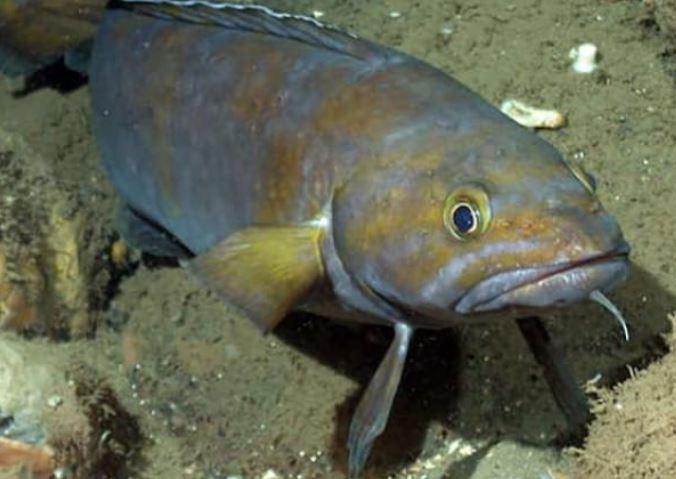NOAA- Fisheries biologists at NOAA’s science center have recently published the first comprehensive overview of the life history of cusk. Cusk is a little-known species mainly because it’s hard to capture in the deep, rocky habitat it prefers. The paper also presents the most complete biological data available for cusk in the western North Atlantic, acquired from a number of sources.
Dave McElroy, a lead author of the paper, explained that “it is a wide-ranging study by necessity, covering many aspects of cusk when data on this species are extremely limited in our region.”
Cusk are thought to have limited movements and prefer rocky habitats and cold water. Since ocean waters are warming where they are typically found, this means cusk are vulnerable to climate change. There’s concern about how this species will adapt to warming waters and their ability to shift their distribution to find cooler waters in which they can thrive.

Without access to cusk, it is difficult for scientists to provide life history information that might help better protect them. Knowing a species’ feeding, spawning, and migration habits allows researchers to better assess what areas of the ocean are most important and how to best manage the population. However, their small population and tendency to dwell in hard-to-reach habitats make this species difficult to study.
Fisheries biologists used data from a variety of sources to construct an overview of cusk life history in U.S. waters. They obtained many of their samples from our bottom longline and bottom trawl surveys. But, the bottom trawl survey equipment cannot easily reach the cusk’s habitats hidden in the rocky bottom. The bottom longline survey equipment is more suited to catching cusk, and researchers obtained most of the samples from this survey. These surveys collect data in the spring and fall.
To capture data collected in other seasons during the study period, our science center’s study fleet collected cusk samples. This expanded the seasonal scope of the sample set.
McElroy noted that “this is a good example of how using a variety of platforms, including industry-based ones, helps create a more complete study of a species, especially one that’s as elusive as the cusk.” It is this broader range of sampling methods, coupled with limited studies from the past, that allowed researchers to detail cusk’s life history, said McElroy.
In order to know how to best protect and support this species, it is crucial for fisheries biologists and managers to understand the life cycle of cusk. This study is important because the authors were able to:
- Identify when cusk spawn in U.S. Atlantic waters
- Assess when females are large enough to reproduce
- Assess when in their lifetimes females have the most capacity to produce eggs
- Detect differences in size and growth rates between males and females
- Determine that larger cusk produce more eggs than expected based on their size alone
These findings have management implications. For example, the increased relative fecundity for larger females increases faster than the fish’s size may suggest. This indicates that both the total number of adult fish and the size composition of the population ultimately determine the total egg production of the population. Also, the growth rate and size at maturity of a species are key parameters to population models. The paper also identifies important areas for further study, including:
- Assessing functional maturity of smaller male cusk
- Understanding the male cusk’s seeming investment in size over reproductive output in comparison to females
- Exploring spatial and temporal patterns in fecundity, maturity, and growth over larger scales
Leave a Reply